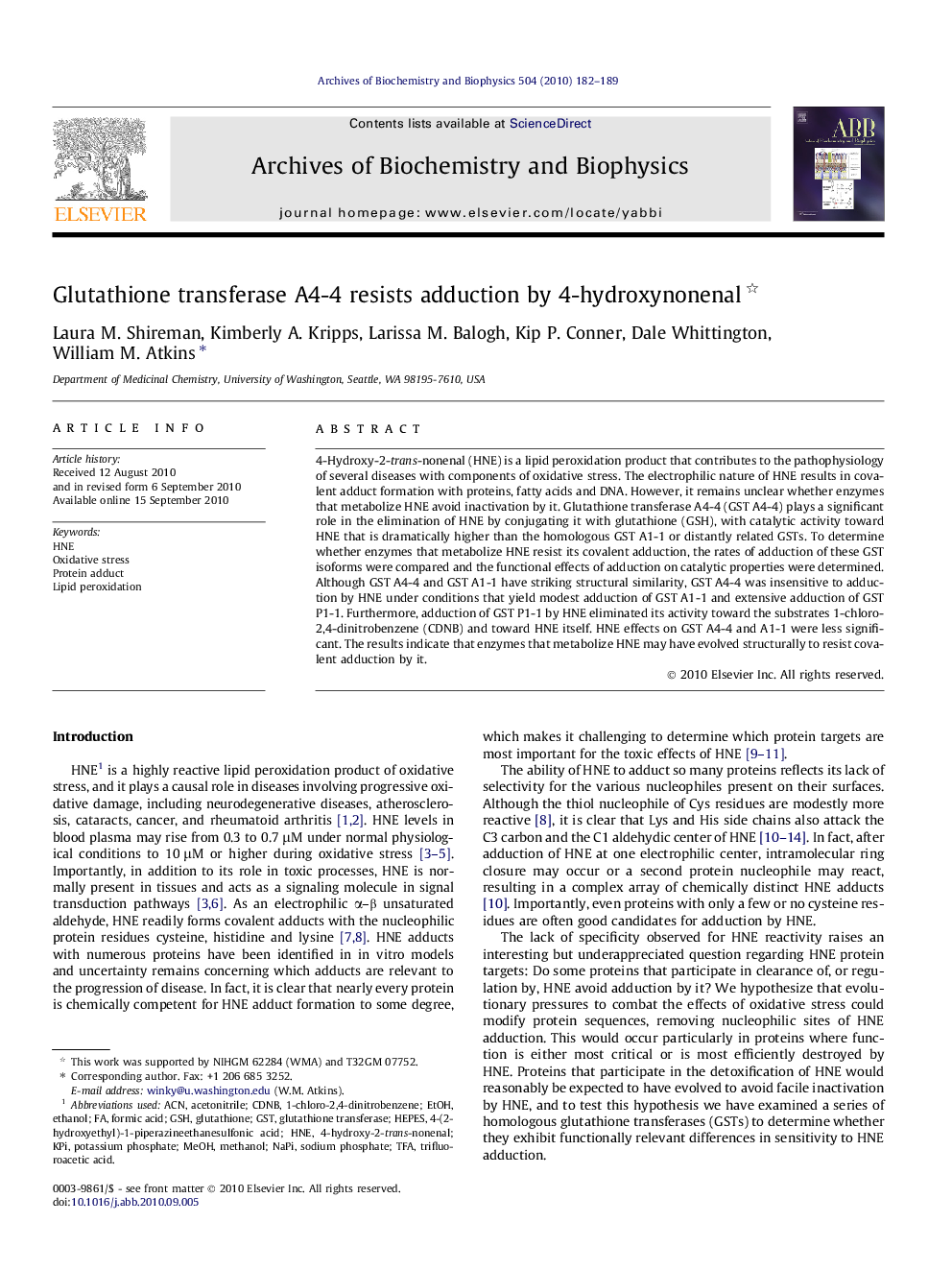| Article ID | Journal | Published Year | Pages | File Type |
|---|---|---|---|---|
| 1925966 | Archives of Biochemistry and Biophysics | 2010 | 8 Pages |
4-Hydroxy-2-trans-nonenal (HNE) is a lipid peroxidation product that contributes to the pathophysiology of several diseases with components of oxidative stress. The electrophilic nature of HNE results in covalent adduct formation with proteins, fatty acids and DNA. However, it remains unclear whether enzymes that metabolize HNE avoid inactivation by it. Glutathione transferase A4-4 (GST A4-4) plays a significant role in the elimination of HNE by conjugating it with glutathione (GSH), with catalytic activity toward HNE that is dramatically higher than the homologous GST A1-1 or distantly related GSTs. To determine whether enzymes that metabolize HNE resist its covalent adduction, the rates of adduction of these GST isoforms were compared and the functional effects of adduction on catalytic properties were determined. Although GST A4-4 and GST A1-1 have striking structural similarity, GST A4-4 was insensitive to adduction by HNE under conditions that yield modest adduction of GST A1-1 and extensive adduction of GST P1-1. Furthermore, adduction of GST P1-1 by HNE eliminated its activity toward the substrates 1-chloro-2,4-dinitrobenzene (CDNB) and toward HNE itself. HNE effects on GST A4-4 and A1-1 were less significant. The results indicate that enzymes that metabolize HNE may have evolved structurally to resist covalent adduction by it.
Research highlights► First study of relative kinetics of HNE adduction to proteins from a single canonical fold. ► First demonstration of vastly different susceptibility to HNE adduction for structurally related homologs. ► Enzymes that metabolize HNE may evolve to avoid adduction.
